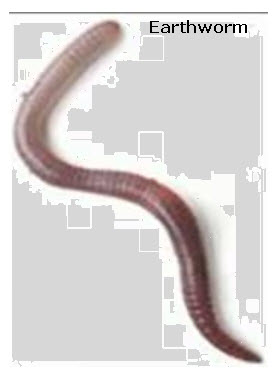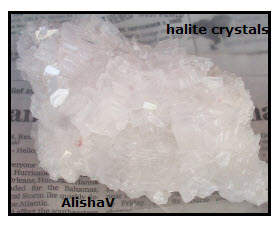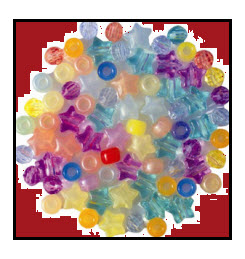Question: What kind of food web are earthworms part of? Answer: Earthworms basically get their nutrition from fungi and bacteria. In turn, earthworms promote the activity of these organisms by shredding and increasing the surface area of organic matter so that it is more available to these small organisms. Earthworms are invertebrates, which means they […]
Earthworms: Recyclers
Question: Why are Earthworms important? Answer: Earthworms Churn the Soil and Make it Porous As earthworms eat their way through soil, they break up hardened soil. Earthworms Improve Water Infiltration Rates The maze of tunnels create as earthworms eat their way through soil allows water as well as air to better mix with the soil. […]
Crystal Project: Variables
A variable is something that can change. For your science fair project, you should change one variable to see what affect it has on another variable. These two variables are: independent variable: Something that you choose to change. dependent variable: Something that changes in response to changes in the independent variable. 1. Following are ideas […]
Types of Crystals
CRYSTALS are solids with particles arranged in a regular, repeating pattern with flat surfaces. Most solids are CRYSTALLINE SOLIDS, which are solids made of crystals. For example, when liquid water freezes, the water molecules link together forming ice crystals. A large piece of ice is made up of many small ice crystals that fit together […]
Halite Crystals: Research
Research is any process that results in the collecting of information about a specific topic. This can be done by reading information recorded by others and/or your own observations and experiments. Research: Reading Following are links to research information about crystals. TYPES OF CRYSTALS HOW CRYSTALS FORM Research: Experimental Exploratory experiments are done for the […]
Classification of Beads
Classification is a term used for organizing things, such as plants and animals, rocks and minerals, or the pony beads used in this activity. First prepare a mixture of beads for each group of 4 to 5 kids. The mixtures do not have to be exactly the same, but each group should include the following: […]
Earthworms: Eyes
Question: Do earthworms have eyes? Answer: Earthworms don’t have eyes, but they do move away from light. Earthworms can and do respond to light because they have light-sensitive cells scattered in their outer skin, especially at their anterior (front-head end) These cells send messages to the earthworm’s brain, which specializes in directing body movement in […]
Earthworm: Size
Annelids (ringed worms) range in size. The Giant Earthworms, of which Michrochaetus rappi is the largest. This worm’s average length is 54 inches (1.36 m) and largest recorded 22 ft (6.7 m) with a diameter of 0.8 inches (2 cm). The smallest Annelid known to science is Chaetogaster annandalai which reaches a length of only […]
Earthworm: Locomotion Model
A paper fan opens and closes in much the same way that an earthworm moves. If you hold one side of the paper fan and pull the other side outward, the pleated paper opens as it stretches out. This models the motion of an earthworm as it stretches forward when moving from one place to […]
Earthworm: Locomotion Model
A Slinky is a coil that climbs down an incline. The motion of the coils are a good model for the motion of an earthworm. First the front slinky coils stretch forward, and then rear coils are pulled forward. The video shows different ways that a slinky can move. Note that you have to get […]
- « Previous Page
- 1
- …
- 59
- 60
- 61
- 62
- 63
- …
- 96
- Next Page »


